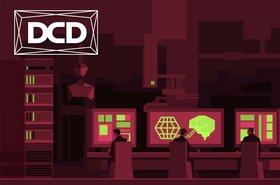Over the years our State of DevOps report has shown that DevOps practices can lead to better performance and organizational outcomes. We have learned and shared the practices and patterns that enable organizations to evolve, and to release better software faster. Yet, despite the notable progress we’ve witnessed in some areas, we have also seen that most organizations struggle to move beyond the middle stages of their DevOps evolution. In most cases there are several successful teams, but they operate as disconnected islands of automation, and the larger organization has yet to build upon their success.
This is partially influenced by some pretty hefty macro-shifts happening in Enterprise IT. Companies around the world are aggressively moving towards the cloud as quickly as possible, security is no longer a box tick, more application delivery teams are emerging, and compliance has risen to the top of the executive agenda. This has led to a growing trend towards what Gartner refers to as Platform Teams (and what Forrester refer to as Automation Strike Teams), where IT capabilities are reframed as a series of self-service products on top of a platform that is the action engine for the rest of the organization.
This is certainly an exciting time to be in IT, however for all the trends and developments, organizations should still evaluate how people and technology could find the right balance to deliver true, measurable success. Here’s a quick snapshot of the main trends we can expect to see this year.
FEASTURE: IBM's hybrid realities
Companies must go beyond Tech modernization
Last year, we saw huge investments being made in automation, the cloud and in the general modernization of technology stacks. But this year, we may see some initiatives fail or be seen as severely limited in value, as a result of many organizations failing to invest in improving both business processes and human interactions around their technology.
The buzz around AIOps is a clear example. Many enterprises are currently looking at AI and Robotic Process Automation (or even low-code/no-code) as a way of dealing with the complexity and fragility of their IT environments instead of doing the work of applying systems thinking, streamlining processes, creating autonomous teams, adopting agile and lean methodologies, and creating an environment of incremental progress and continuous improvement. Companies should still focus on maximizing the value of the employees’ intelligence before they can start looking to the robots for anything that goes beyond prototyping and ideation.
The companies that have completed the hard work of optimizing business processes, such as change management and compliance, and have made it easier for people to work across organizational boundaries, will thrive in 2021, accelerating ahead of those who have not. This year, companies must focus on culture and prioritise what users and employees really need to continue best practice in business.
Adopting a product mindset is essential
Recent findings from our latest State of DevOps Report showed that 60 percent of respondents have at least one internal platform team providing self-service functionality, but many initiatives will fail to deliver their promises this year as a result of teams not bringing a product mindset to their work. Although we have gotten better over the years at breaking down cultural siloes when it comes to collaboration and DevOps methodologies, it is arguable that a large majority of organizations are still drawn to developing their own quick-fix solutions which saturate infrastructures, hindering overall business agility and efficiency.
Simply exposing existing capabilities via self-service APIs is not enough, and in order to achieve success, they need to focus on the following: solving user problems in a modular and composable way, marketing those solutions internally, and continuously investing in the platform itself. By shifting towards a platform (self-service) approach, organizations can empower their IT teams to make infrastructure secure, compliant and easy to manage at scale and across different environments, without duct taping a bunch of different tools together and future proofing growth. Without these actions, teams are simply rebadging centralized IT, which has rarely proved to be a winning strategy for keeping up with developer demand in the enterprise.
Résumé-driven k8s deployments will fail to deliver on the developer experience
Kubernetes has become widely adopted and is now seen as a common standard for application delivery. This will only go from strength-to-strength in 2021, but we may experience increased levels of business frustration. Platforms, practices and tools, such as Kubernetes, have been obtained from Big Tech companies, and not every enterprise has the in-house skills and experience that is required to operate a large-scale, distributed infrastructure platform themselves.
While Kubernetes has the potential to bring immense value to the right business, the reality is that many k8s deployments are being driven by a desire to pad out resumes and CVs, rather than matching the needs of specific teams and organizations. Instead of building sophisticated and complex infrastructures for the sake of following a trend, IT teams must evaluate business needs and whether k8s is the necessary answer for their environments.
Recognition and focus on the operational side of serverless will increase
Due to its immense value, serverless adoption will accelerate at an incredible rate this year and we will see an increased awareness of the operational engineering issues of managing all the interconnections between components. As uptake increases, more tools and products will emerge to solve problems in this space. Good ops engineering skills will be also recognized to be highly portable and more relevant than ever, which is great news for DevOps professionals.
There’s no doubt that DevOps is evolving and the uptake of processes are increasing as more businesses make the transition to the cloud. But for DevOps to scale throughout the organization, both humans and technology must be at the center, cultivating agile and lean methodologies to mature and live up to its promise.





